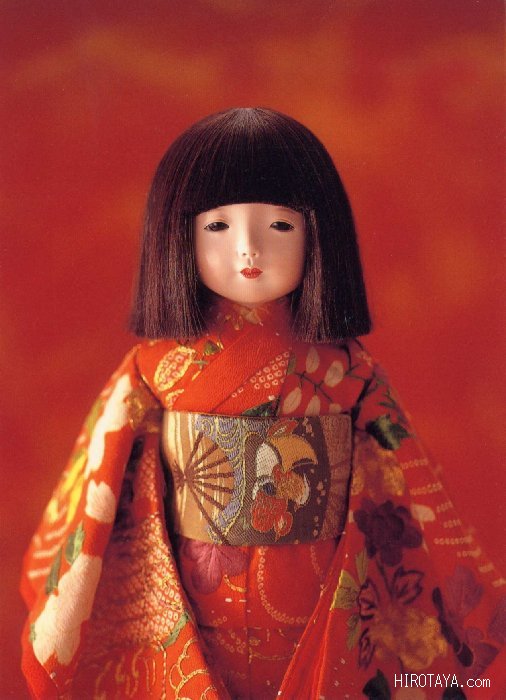The author of the doll
My parents were in the doll business and it was an important factor in my decision, but I have to admit that until then I'd had no special interest in dolls, and absolutely no idea about the kinds of dolls I wanted to make. I was frustrated and discouraged. I guess I was grasping at straws, but I just wanted to find a way of making a living with my child. I realized that switching careers at that age wouldn't be easy, but since doll-making requires practical, technical skills, I felt that if I applied myself seriously, I was bound to make progress. The greatest problem I faced in my pursuit of dolls and doll-making was a deeply personal one. I saw the world of dolls as exclusive preserve of women and children. Though now I know that this is profoundly untrue, I had to discover it for myself, to find the depth and resonance of my place as a man in this world. Looking back at it now, it was a valuable experience, but at the time it felt as if I was destroying something inside me. At the same time, I had a hunch that if I were able to experience this new world not from the outside, but from within, it would open up a whole new life for me. With mixed feelings, I grappled with the problems of doll-making. Although I looked at many dolls and eagerly read books about them, I don't think it had much effect on me. I would not go so far as to say that such things don't have their place, but what I saw seemed to be based on assumptions I could not share. Most dolls were made within a framework of Japanese traditions and customs, such as the Doll Festivals celebrated every year in March and May. Even if I were to use traditional techniques, those basic assumptions and couldn't provide me with a unique framework for my own creations, because I had no real point of departure. My sensibilities, of course, had nothing to do with dolls: I was just like every other average person living in the twentieth century. For me, the dolls that were made for those with purist or traditional tastes could only ever exist in a secret and locked room, sealed off from the present and far away from me. No matter how splendid the dolls lived inside that room, they could never survive on the outside. This was the only way that I was able to relate to dolls and doll-making. Somehow I had to deal with these two contradictory ideas: the present and the secret, closed room. I searched for a place outside that room, a larger and more open space where we live our ordinary lives, a place where dolls can breathe freely. In such a place,dolls could exist in the vivid present. If I could find a new space for my dolls, I might also be able to create a new space for my own life.

